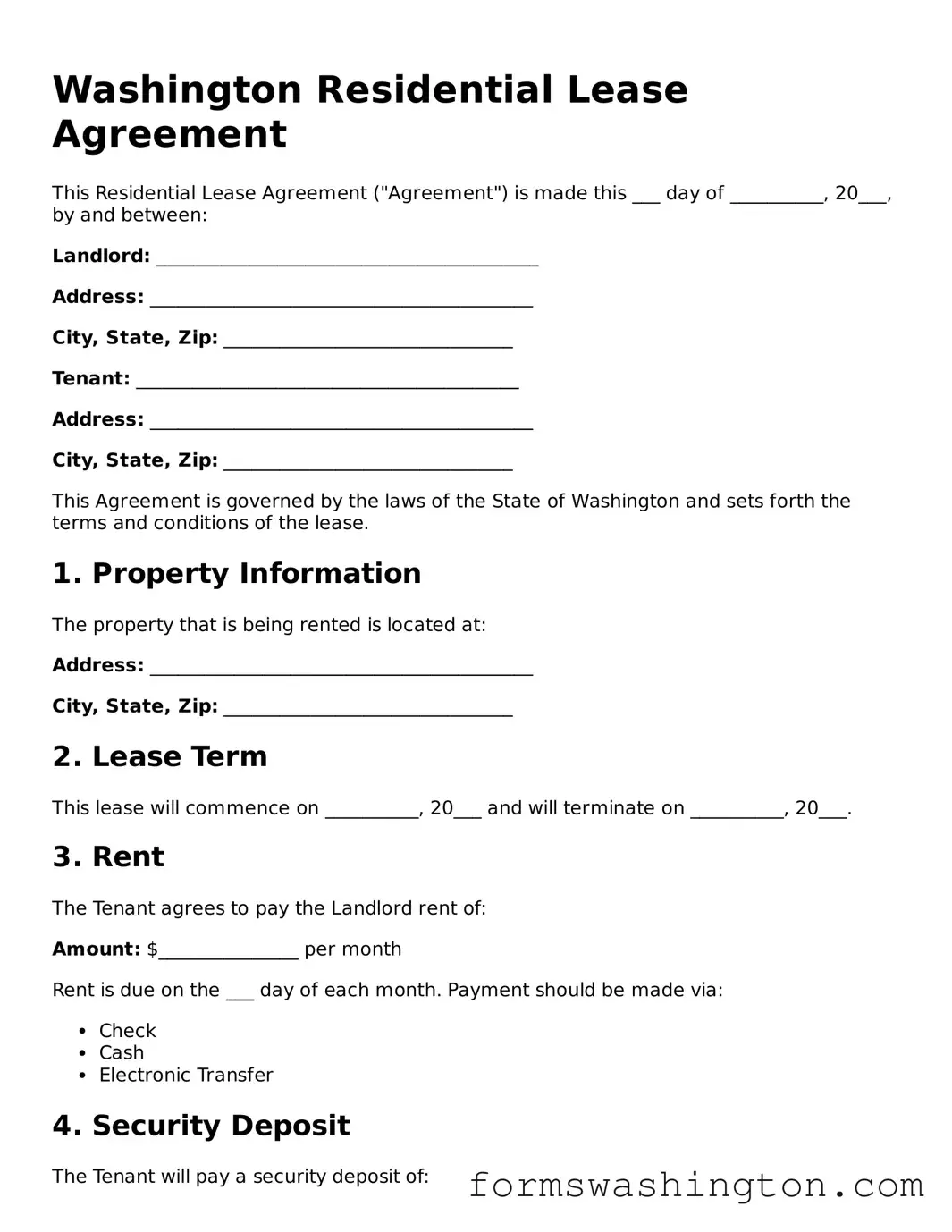Blank Residential Lease Agreement Template for Washington State
The Washington Residential Lease Agreement is a legal document that outlines the terms and conditions between a landlord and tenant for renting residential property in Washington State. This form serves as a critical tool to ensure both parties understand their rights and responsibilities. By clearly defining the rental terms, it helps prevent disputes and fosters a positive rental experience.
Open Editor Here
